Boys can stop peeing whenever they want, but girls can't?
![[有片]為什麼男生排尿時能說停就停,而女生卻不行?](https://findgirl.org/storage/2025/09/為什麼男生排尿時能說停就停-而女生卻不行.webp)
Table of contents
In everyday life, it is often noticed that boys are in theurinateGirls seem to be able to "stop" easily when they want to, whereas girls are less likely to do so. This phenomenon raises many curiosities: What is the reason for this difference? There is also a common question: can a living person really die from urine? This article explores these questions in depth.
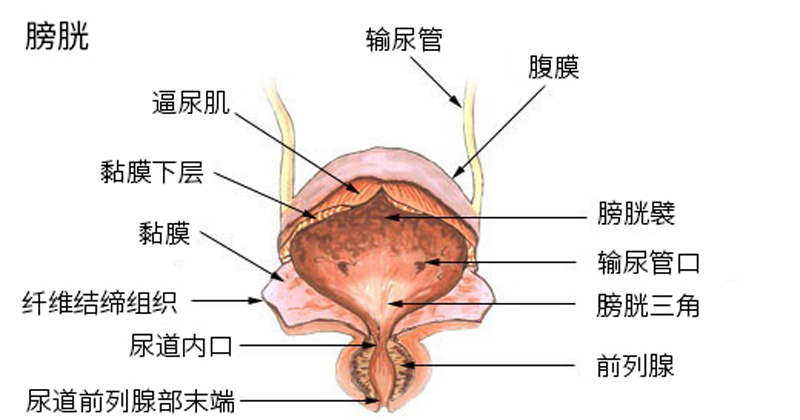
Anatomical differences in the urinary system
There are significant structural differences between the urinary systems of boys and girls, which directly affect the ability to control urination.
The male urethra is about 15-20 centimeters long, frombladdersThe urethra extends from the neck, through the prostate gland, the pelvic floor muscles, and eventually to the end of the penis. The urethra is divided into three sections: the prostatic urethra, the sponge urethra and the membranous urethra. The prostate is surrounded by an internal sphincter (the internal urethral sphincter, a smooth muscle, controlled by the autonomic nerves) and an external sphincter (the external urethral sphincter, a skeletal muscle, which can be controlled at will). These sphincters ensure that urine is expelled at the right time. The female urethra is shorter, only about 3-5 centimeters, and extends directly from the neck of the bladder to the opening of the anterior wall of the vagina. Women also have both internal and external sphincters, but because the urethra is short and close to the vagina and rectum, external pressures (such as pregnancy or childbirth) are more likely to affect control.
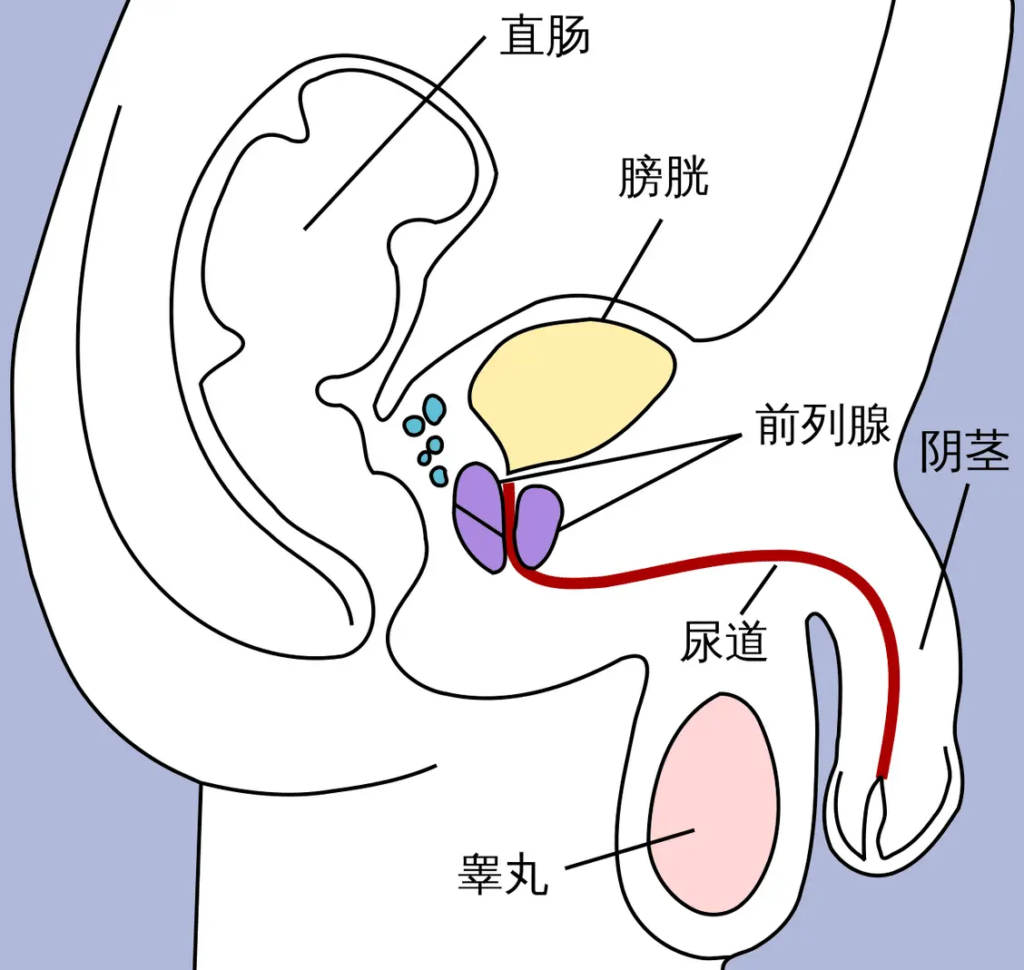
| project | a male | females |
|---|---|---|
| Urethral length | Approx. 18-20 centimeters | Approx. 3-5cm |
| external sphincter | Obviously, skeletal muscle is dominant | Weaker, thinner muscle thickness |
| Hormonal Effects | Androgens enhance muscle tone | Estrogen makes muscles looser |
Anatomically, the longer urethra in boys does provide additional resistance, but it is not the primary reason for "stopping". The key lies in the strength of the external sphincter and the coordination of the pelvic floor muscles. Studies have shown that both sexes can interrupt the flow of urine by contracting the pelvic floor muscles (Kegel exercises), but girls are more susceptible to hormonal changes due to their anatomical position, resulting in weakened muscle strength.
In women, the opening of the urethra is inside the labia, not at a distance from the body as in men, and the urethra is oriented in a downward direction.
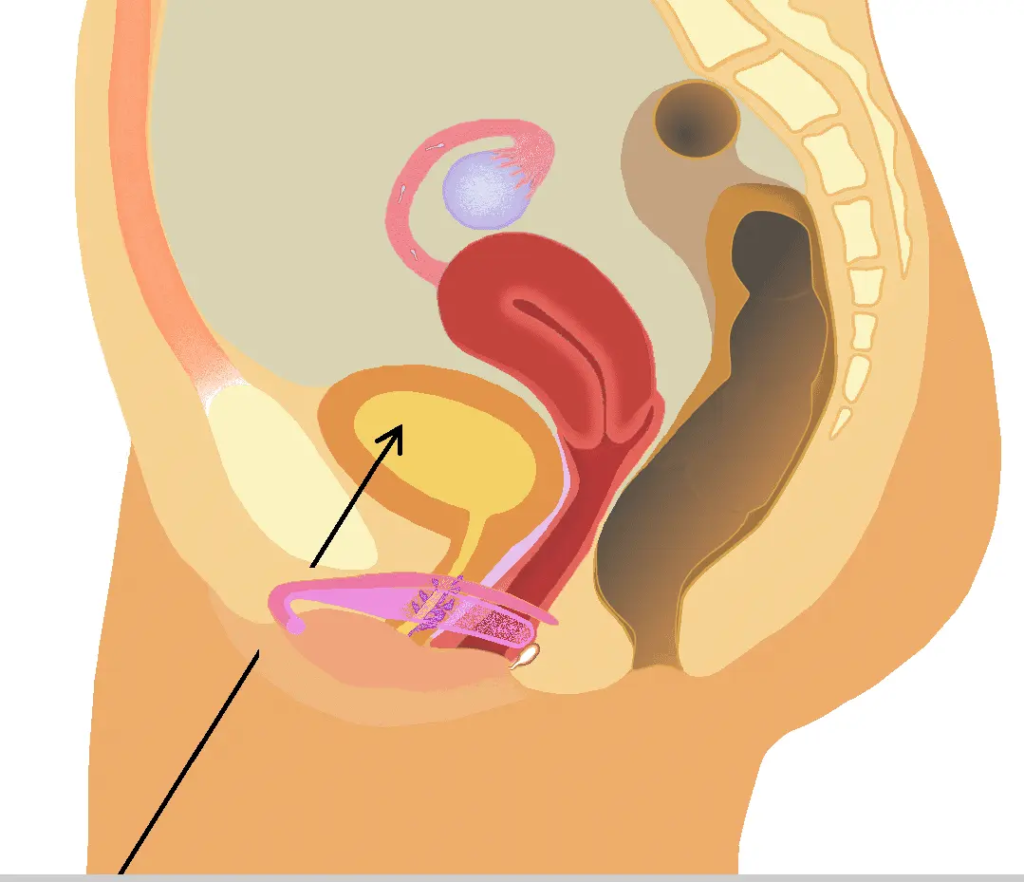
Physiological Mechanisms of Urinary Control and Male-Female Differences
Urination is regulated by the nervous system: when the bladder is full, sensory nerves report to the brain, which instructs the urethral muscles to contract and urine passes from the bladder into the urethra. The external sphincter is the key "gateway" - it is an arbitrary muscle that can be closed voluntarily to stop the flow of urine. That's why both genders can practice Kegel exercises to strengthen it: to stop the flow of urine is to contract the external sphincter and the pelvic floor muscles.
However, why is it that boys are more likely to "stop when they say stop"? It's not an absolute advantage, but a statistical tendency. Studies have shown that boys are less susceptible to hormonal fluctuations because androgens (e.g. testosterone) maintain the strength of the pelvic floor muscles. Women, on the other hand, have less control due to changes in estrogen (e.g., menstruation, pregnancy, or menopause), which tends to relax the bladder and urethral muscles. However, frequent interruption of the urine flow is not medically recommended for either sex, as it may interfere with the urethral muscles, leading to accumulation of residual urine and increasing the risk of infection.
Summary of reasons:
- Anatomical factors: the length of the male urethra provides natural resistance.
- Muscle strength factors: Androgens enhance sphincter endurance in boys.
- Hormonal factors: Estrogen in girls causes the muscle to relax, making it easy to leak urine.
Graphical presentation: Comparison of pelvic floor muscle strength between men and women (based on simulated data, unit: muscle contraction force, kPa)
Use the table to present hypothetical data (from study averages):
| Age Groups | Mean external sphincter strength (kPa) for boys | Mean external sphincter strength (kPa) for female students | Reasons for Discrepancy |
|---|---|---|---|
| 20-30 years old | 80-100 | 60-80 | Androgen peak vs estrogen wave |
| 40-50 years old | 70-90 | 50-70 | Slightly enlarged prostate vs Pregnancy effects |
| Over 60 years old | 50-70 | 30-50 | Ageing vs Low Estrogen in Menopause |
This graph shows that as girls age, their muscle strength declines more rapidly, resulting in amplified control differences.
Why is it more difficult for women to interrupt urination?
Effects of Estrogen on Muscle
Estrogen decreases the tension of smooth muscle and skeletal muscle, which explains why women may experience a decrease in estrogen after menopause.urinary incontinenceorfrequency urinationThe phenomenon.
Urethral Length and Pressure Conduction
In men, the urethra is long and the urine has to pass through a longer passageway, which provides more control points for the external sphincter. In women, the urethra is shorter and it is more difficult for urine to be "pulled back" once it enters the urethra.

Effects of Hormones on Bladder Control
Hormones are the key factor. In men, testosterone maintains the strength of the pelvic floor muscles and sphincter, reducing the risk of incontinence. In women, estrogen protects the urethral mucosa and muscle elasticity, but low estrogen (e.g., during menopause) leads to bladder hypersensitivity, frequent urination, or incontinence. Studies have shown that oral estrogen may increase the risk of overactive bladder in women under 60 years of age, but has a mitigating effect in menopausal women.
Time Period: Hormone Change Time Line
- Puberty (12-18 years): testosterone rises in boys and strengthens muscles; estrogen stabilizes in girls and is well controlled.
- Adulthood (20-40 years old): During a girl's menstrual cycle (28 days), the peak estrogen (day 14) muscle strength is optimal, and the trough (menstrual period) makes her prone to frequent urination.
- Midlife (40-60 years old): girls go through menopause (lasts 5-10 years), estrogen drops by 30-50%, risk of incontinence increases 2-fold.
- Old age (over 60 years): Both sex hormones decline, and in boys the prostate enlarges, leading to retention.

Can a living person be forced to urinate and die?
The answer is: very rare, but possible.
Holding urine for too long leads to overstretching of the bladder (over 1,000 ml), which can lead to rupture, infection or kidney damage. Normal people have a bladder capacity of 400-600 ml. Holding urine for 6-8 hours is not a problem, but the risk increases after 24 hours. Serious cases: bladder rupture leads to abdominal infection, sepsis and even death.
Historical Case: Urinary retention has been a common problem since ancient times. Ancient Egyptians used catheters to relieve it in 3000 BC. Modern studies: From 1997-2017, 1-year mortality rate of men with acute urinary retention decreased from 22% to 17%, mainly due to complications such as infection. A case of bladder rupture in a 23 year old male who died due to urinary holding due to urethral stricture.
Statistical Tables and Figures: Prevalence of Urinary Incontinence and Retention (%)
Use the table to display global data:
| type | Male Prevalence (%) | Female Prevalence Rate (%) | Main reasons |
|---|---|---|---|
| incontinence | 3-11 | 11-34 | Muscle relaxation/delivery |
| urge incontinence | 40-80 (male total) | 31 (aged 75 or above) | Hormones/Neurology |
| overflow incontinence | 5 | 5 | Retention/obstruction |
| total incontinence | 5.5 | 11.2 | Anatomy/Hormones |
The data shows that the incontinence rate of girls is twice as high as that of boys.

Risk and Prevention
Prolonged holding of urine can lead to urinary tract infections, bladder stretching, or kidney failure. Prevention: regular urination, Kegel exercises (but do not interrupt urine flow exercises), hormone therapy (e.g., low estrogen for women). Men take care of prostate health.
Time Period: Urine Holding Risk Time Line
- 0-4 hours: no obstruction, only discomfort.
- 4-8 hours: pain, increased risk of infection.
- 8-24 hours: bladder extension, increased renal pressure.
- More than 24 hours: rupture risk, mortality <1% but present.

Urination Process Time Line
describe:
This line graph shows the time line of the urination process (from bladder filling to urine discharge) and compares the difference in time between men and women at each stage. The horizontal axis is time (seconds) and the vertical axis is bladder pressure (kPa). The chart contains two curves:
- Men's Curve(blue): shows bladder pressure rising from 0 seconds (onset of urge to urinate, about 300-500 ml) to 5 seconds (contraction of the urethra muscle), with the onset of urine flow at 10 seconds and the end at 30 seconds (urine flow rate of 15-20 ml/s). The curve is gentle, reflecting the slower flow rate due to the longer urethra.
- Girls' Curve(Pink): shows a similar rise in pressure, but urine flow begins at 8 seconds and ends at 25 seconds (urine flow rate 20-30 ml/s). The curve is steeper, reflecting a short urethra leading to rapid expulsion.
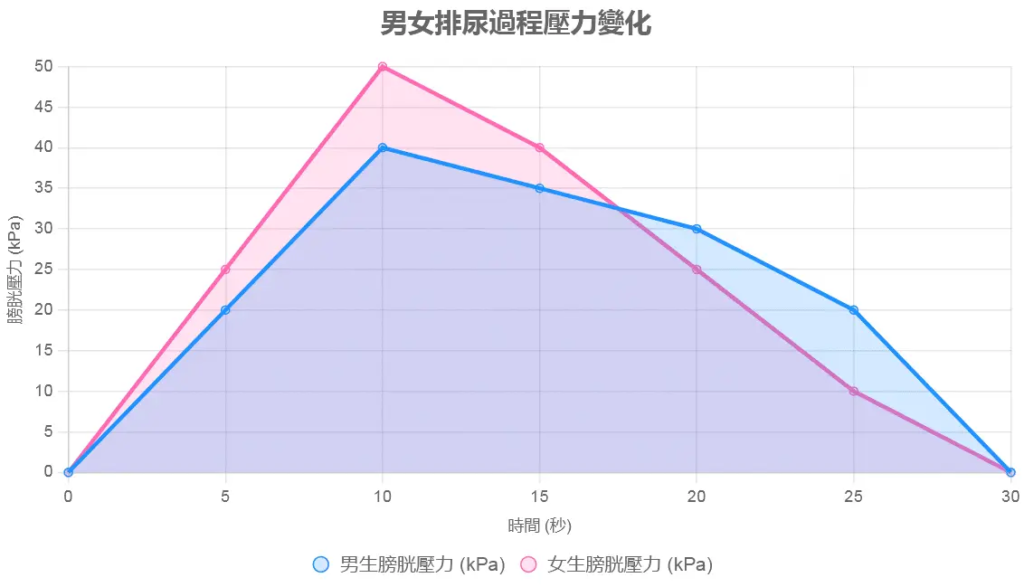
Cause Analysis:
The line graph shows that girls have shorter start and end times (about 17 seconds vs. 20 seconds for boys) because of the shorter urethra and faster urine flow, which requires stronger sphincter force to interrupt. In boys, the change in pressure was more moderate, reflecting better urethral resistance and sphincter control.
Hormonal effects on pelvic floor muscle strength
describe:
This bar graph compares the strength of the external sphincter and pelvic floor muscles (in kPa) in men and women of different ages (20-30, 40-50, 60+). There are two bars for each age group:
- boy's column(dark blue): shows muscle strength 80-100 kPa for 20-30 years old, 70-90 kPa for 40-50 years old, and 50-70 kPa for 60+ years old.
- female column(Pink): Shows 60-80 kPa for ages 20-30, 50-70 kPa for ages 40-50, and 30-50 kPa for ages 60+.
Column height differences reflect the effects of androgens (testosterone) and estrogens: muscle strength declines slowly with age in boys and more rapidly in girls due to the sudden drop in estrogen during menopause.
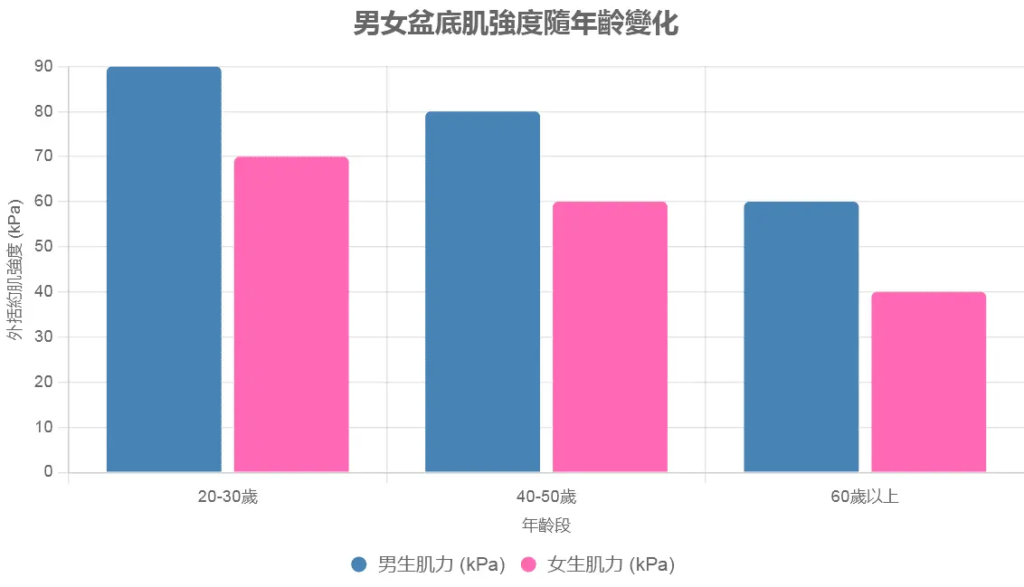
Cause Analysis:
柱狀圖顯示,男生肌力始終高於女生,尤其在60歲以上,差距達20-30 kPa。這與雄激素穩定肌力、雌激素波動導致肌鬆弛有關。女生更年期後(約50歲起),雌激素下降30-50%,失禁風險增2倍。
Urine Holding Risk Timeline
describe:
此折線圖展示憋尿時間(小時)與健康風險(以風險指數0-100表示)的關係,比較男女風險差異:
- Men's Curve(藍色):0-4小時風險0-10(僅不適),4-8小時10-30(感染風險增),8-24小時30-70(膀胱伸張),24小時以上70-100(破裂風險)。
- Girls' Curve(粉紅色):風險上升更快,4-8小時20-40,8-24小時50-90,因肌力較弱,膀胱耐受力低。
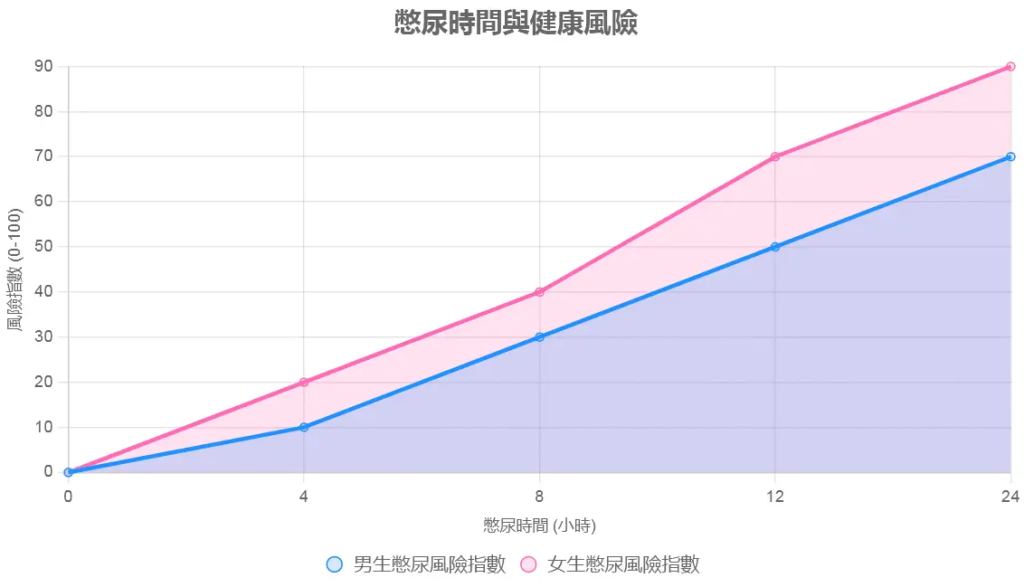
Cause Analysis:
圖表顯示,女生因肌力與尿道結構,憋尿8小時後風險急劇上升。24小時以上,膀胱破裂風險(雖<1%)對女生更高,因膀胱壁耐受力較低。
Prevalence of urinary incontinence and retention
describe:
此圓環圖展示男女尿失禁與尿潴留的盛行率(%),分為應力性失禁、急迫性失禁與溢流性失禁:
- 男生(藍色系):應力性3-11%,急迫性40-80%,溢流性5%。
- 女生(粉紅系):應力性11-34%,急迫性31%,溢流性5%。
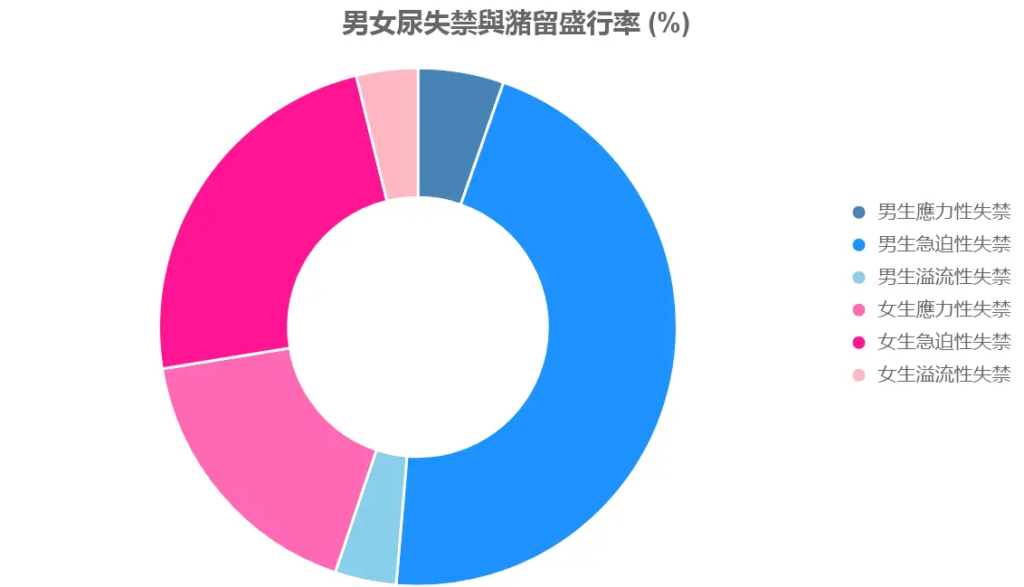
Cause Analysis:
圓環圖顯示,女生應力性失禁盛行率(22.5%)遠高於男生(7%),因分娩與雌激素影響。急迫性失禁在老年男性中較高(前列腺問題),而女生總失禁率(11.2%)為男生的2倍。
in conclusion
男生「說停就停」的能力源於解剖與激素優勢,但女生也可透過練習改善。憋尿死亡雖罕見,但歷史與數據證實其風險。建議及時就醫,避免強行憋尿。
Further reading:



![[有片]把與生俱來的「好色」,用以點燃事業的雄心](https://findgirl.org/storage/2025/11/有片把與生俱來的「好色」,用以點燃事業的雄心-300x225.webp)


-300x225.webp)
